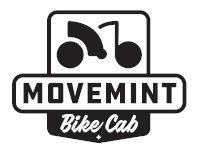Most transportation accidents happen due to the operator making a mistake. Pilots, Bus drivers, Taxi drivers, and Pedicab drivers make mistakes. On rare occasions, these mistakes can lead to injury accidents. By in large, professionals responsible for the transportation of passengers are very safe and well trained. Most of these professions have training programs that help to ensure that common accidents in their field can be avoided.
Currently, pedicab operators in Austin are required to have a Texas drivers license, and a pedicab operators permit issued by the City of Austin. These requirements alone make Austin’s pedicab operators better trained than those in many cities. Additionally Austin pedicab divers are most usually trained by the people that rent them a pedicab. However, there is no standard for this extra industry specific training. While many companies have very thorough training programs, some training programs are lacking, many are inconsistent, and most do not have a written curriculum.
There are established cyclist training courses that are designed to teach cyclists, young and old how to move safely through traffic. Below are examples of such training programs in the US and England.
http://www.johnforester.com/Articles/education.htm
http://www.ctc.org.uk/DesktopDefault.aspx?TabID=5116
A very good book on safe cycling is “Effective Cycling” by John Forester.
I would argue that successful completion of such a training programs would have an even greater effect for a helping pedicabbers avoid accidents than automobile operator training. I believe that Pedicabbers should have both a drivers license and cycling training. In doing so they would be best prepared to deal with cars in traffic as a cyclist.
As good as they are, the above cyclist training programs do not have any thing specific to pedicabs in them. We pedicab operators face challenges that no other cyclists face. We must be able to safely load, balance, start, transport, stop, and unload groups of passengers weighing several hundred pounds. Sometimes we must do this on vehicles that may have been adapted from other uses to perform this task, such as a mountain bike pulling a trailer style pedicab. While carrying passengers we usually travel at speeds slower than a normal bicycle. We must be aware of areas, intersections and bridges that are known to be dangerous due to poor lighting or visibility. We must also be aware of Austin pedicab “etiquette” regarding queuing locations, and where on east Sixth Street we are allowed to queue when the barricades are in place. All of this complexity is compounded by fact that pedicabbers provide the motive power to move our passengers, and when tired or dehydrated from this exertion, our judgment can become impaired.
All of this makes for a complex and challenging set of requirements that must be over come before we even begin to make money. Pedicabbing looks like a simple job, but it is not.  Standardized training on the following topics is needed:
- An overview of the Austin pedicab rules in Austin city code chapter 13-2
- An overview of Texas laws that cover bicycles
- How to inspect your pedicab to ensure it is safe for operation
- General road safety as a slow moving vehicle
- Safely loading and unloading passengers
- Proper use of brakes to avoid collisions or sudden stops
- Line etiquette, why and how it works
- Proper queuing on Sixth street
- NO-GO areas to avoid serious injury accidents, such as the Congress and South first street bridges, the Fifth street hill between Nueces and San Antonio
- Austin specific laws regarding riding a bicycle on Downtown sidewalks.
- Better ways of interacting with Austin Police
- Company specific policies for charging fares or collecting “tips” from customers
- Better ways to interact with and attract customers.
- Avoiding impaired judgment from exhaustion while on the pedicab with proper nutrition, hydration and rest.
- Proper cycling ergonomics to avoid pain or discomfort which can in turn lead to distraction and accidents.

